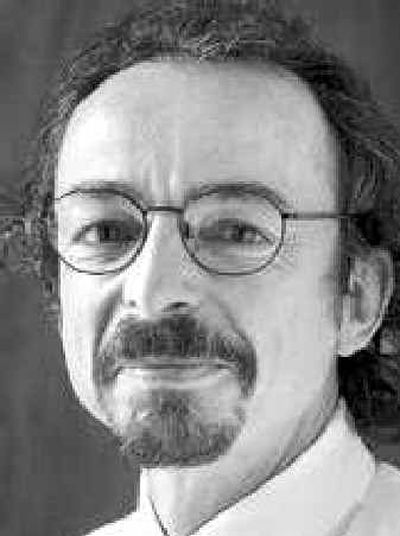Virtual training gets real

The pistol rotates, a bullet slides into the chamber, and — click — hits you right between the eyes. Virtually.
The trick is one of the simplest, if most unsettling, performed at the virtual reality laboratory at Washington State University. With the same program, a full-scale ATV can be projected on the screen and mounted by a virtual rider. Another click, and the operator can model the dispersion of a hazardous gas over a particular piece of terrain.
Lab co-directors Uma and Sankar “Jay” Jayaram and their students have been adapting virtual reality technology to manufacturing and training applications for more than a decade. Once a concept with few applications, virtual reality has become a powerful tool for industry and science.
Paccar, for example, has been a patron of the WSU program since the early 1990s.
The Jayarams got the Bellevue truck maker’s attention by virtually modeling a cab interior. A “driver” checks things like gauge visibility and steering positioning as if seated in a Kenworth stuck in traffic on Interstate 5.
A former student heads Paccar’s own virtual reality lab in Mt. Vernon, and the Paccar and WSU labs are developing calibrations that will eliminate distortions in the virtual environment caused by the presence of metal.
At Itronix, Frank Taylor designs the mechanical components for the Spokane company’s hand-held computers, which must work under the harshest environmental conditions.
“The experience I got in the lab really taught me a lot about the fundamentals behind computer-aided design,” Taylor says.
If virtual design is not a part of his every day work, he adds, “It’s more how I approach the task I have to do.”
While at WSU, Taylor participated in a demonstration of a virtual assembly design environment, a project that included work with companies like Caterpillar, Deere, Komatsu and other companies. They tested manufacturing processes, right down to how a heavy part might swing as a crane operator moves it into place.
In a virtual environment, Uma says, manufacturers can determine how best to assemble anything from an axle to a circuit board without having to work through the process on the factory floor.
“You have a feel for the size of the problem you have on your hands,” Jay adds.
He says much of the emphasis in virtual reality research has moved towards training. Two graduate students, Youngjun Kim and Pei Zhan, demonstrate by disassembling a defective missile.
Kim, in helmet and glove, does a complicated pantomime that ends with the extraction of a circuit board. His view is projected onto a large screen. Zhan, meanwhile, makes sure the environment he works in responds properly. The two wrote much of the computer code that makes the exercise possible.
Jay says that, thanks to new VPnet high-speed broadband, emergency responders from all over the country can jointly participate in similar exercises, in the process greatly expanding the pool of individuals who will know how to react when a real-life emergency occurs.
Officials are still determining how best to apply virtual training to homeland security situations, Jay says.
The Jayarams say part of their responsibility in keeping the WSU virtual lab on the “bleeding edge” is envisioning what the technology will look like 10 years into the future, and how to prepare students for its deployment.
“This has always been a challenge,” Jay says. “You need to kind of extrapolate.”
He expects improved voice-recognition capabilities to be one of the new frontiers.
Students understand the possibilities, and want to get there yesterday.
In part because of the increasing sophistication of video games, undergraduates in particular expect to jump right into a three-dimensional environment without learning some of the mathematics best grasped in a two-dimensional format.
“You risk losing students,” Uma says, if the program does not maintain the right balance between virtual carrot and fundamentals stick.
Both say the university has been helpful financially and in efforts to commercialize some lab research. The lab, for its part, has become a leader in designing the virtual environment, they say, and in producing students with a unique combination of mechanical engineering and computer software skills.
Uma says bridging the academic and industrial worlds has been the lab’s biggest achievement.
The opportunities are startling, just like that shot between the eyes.